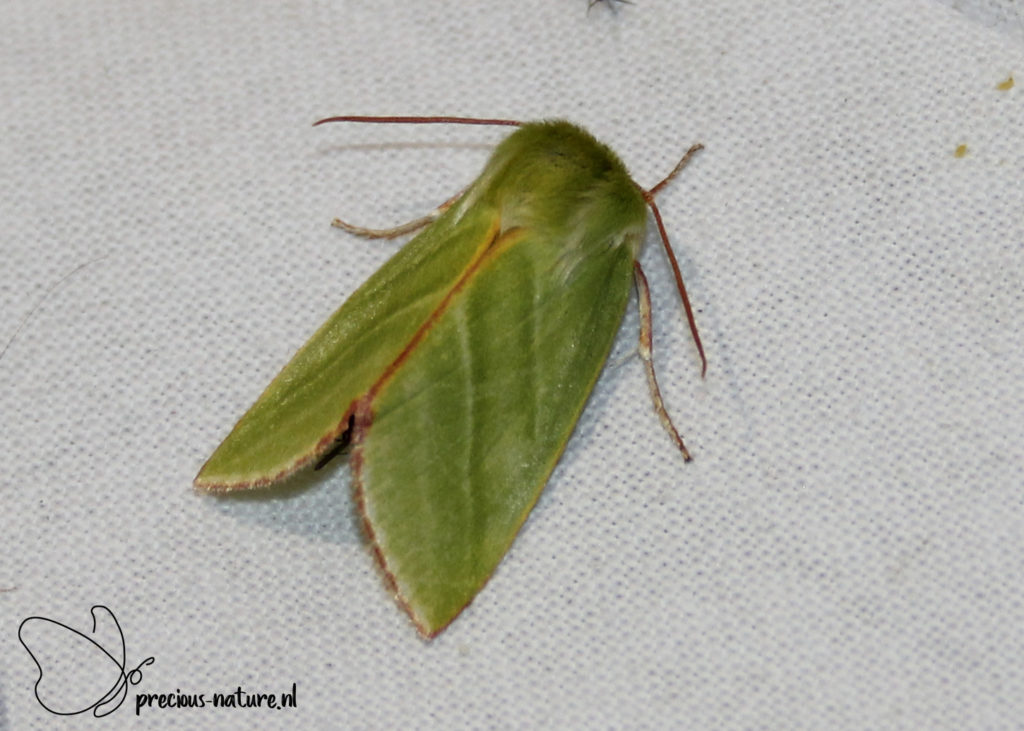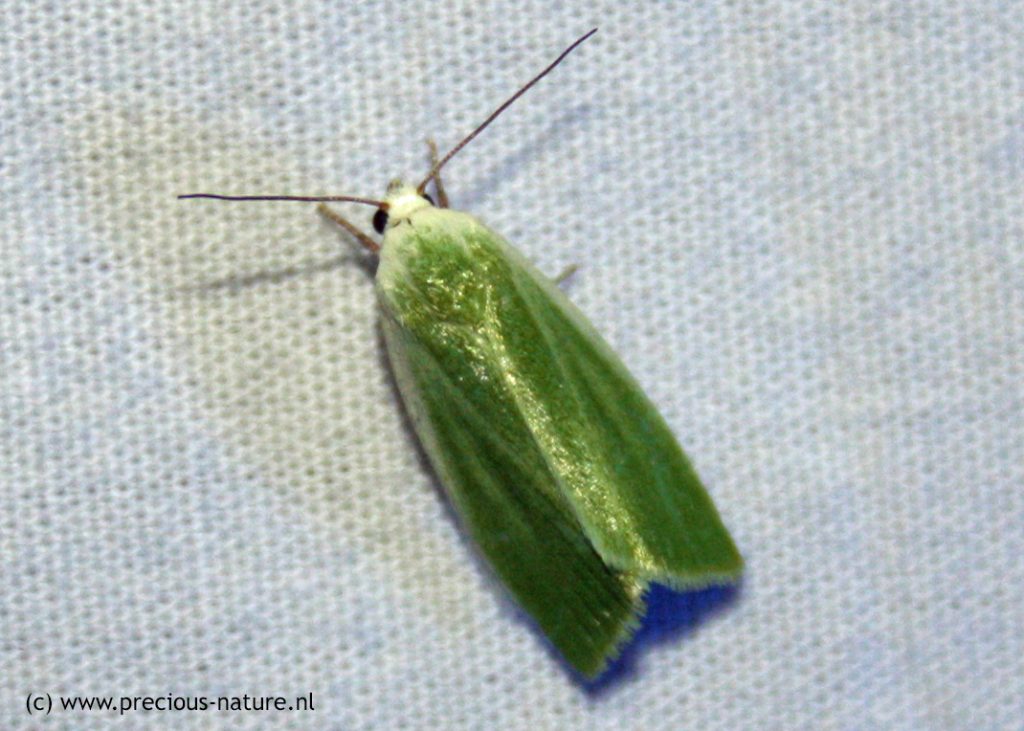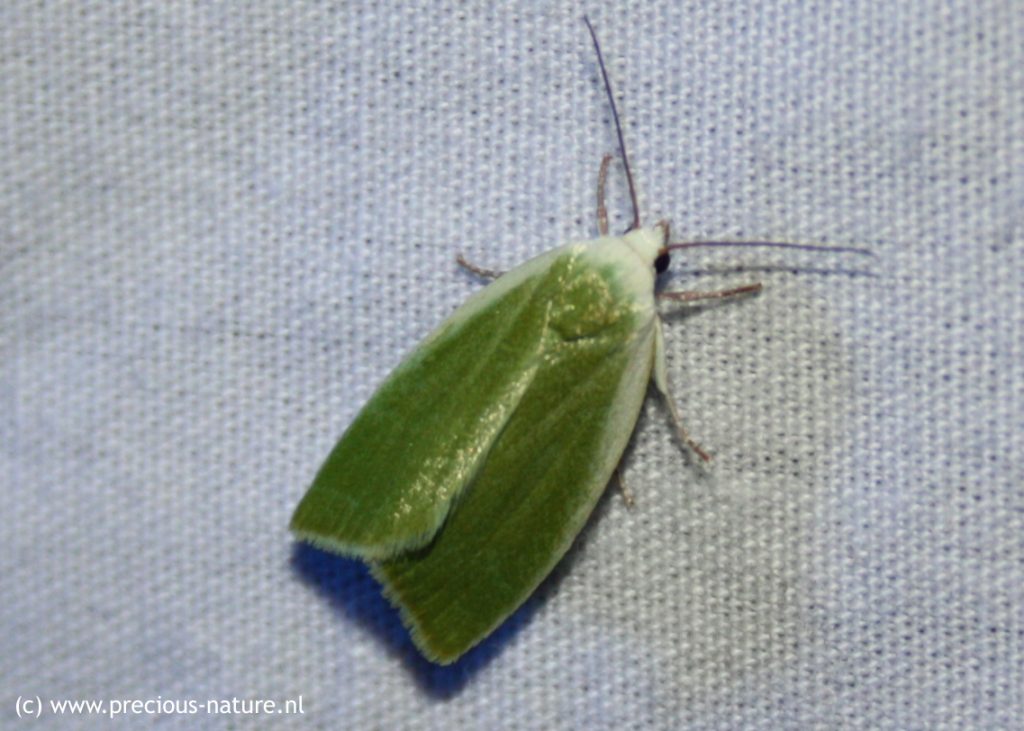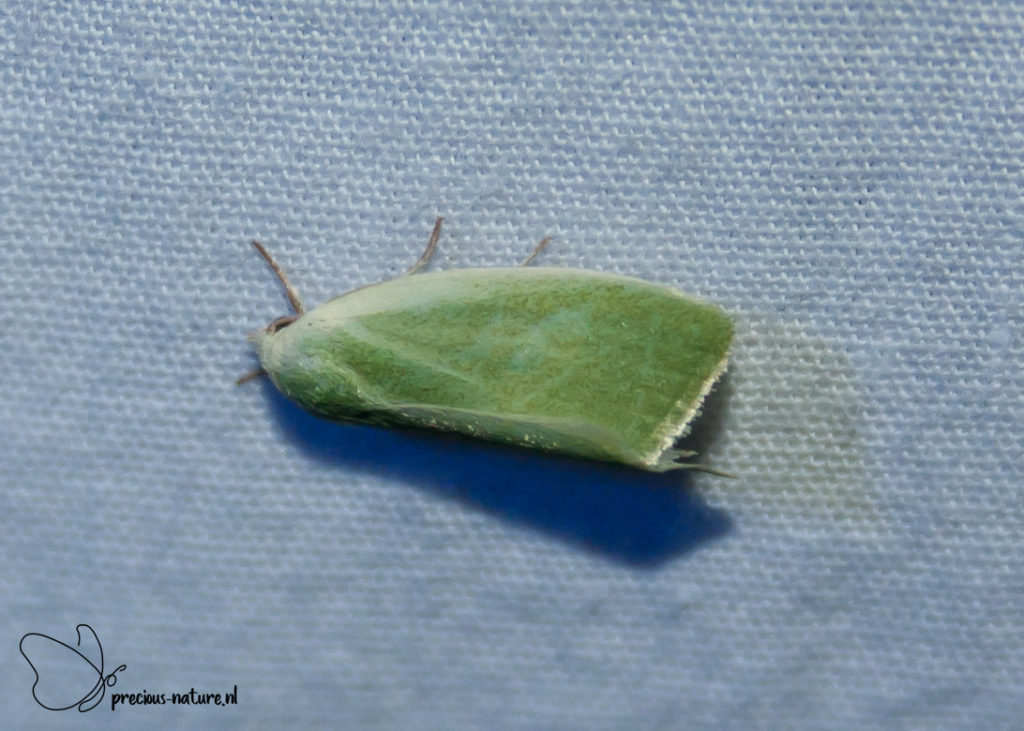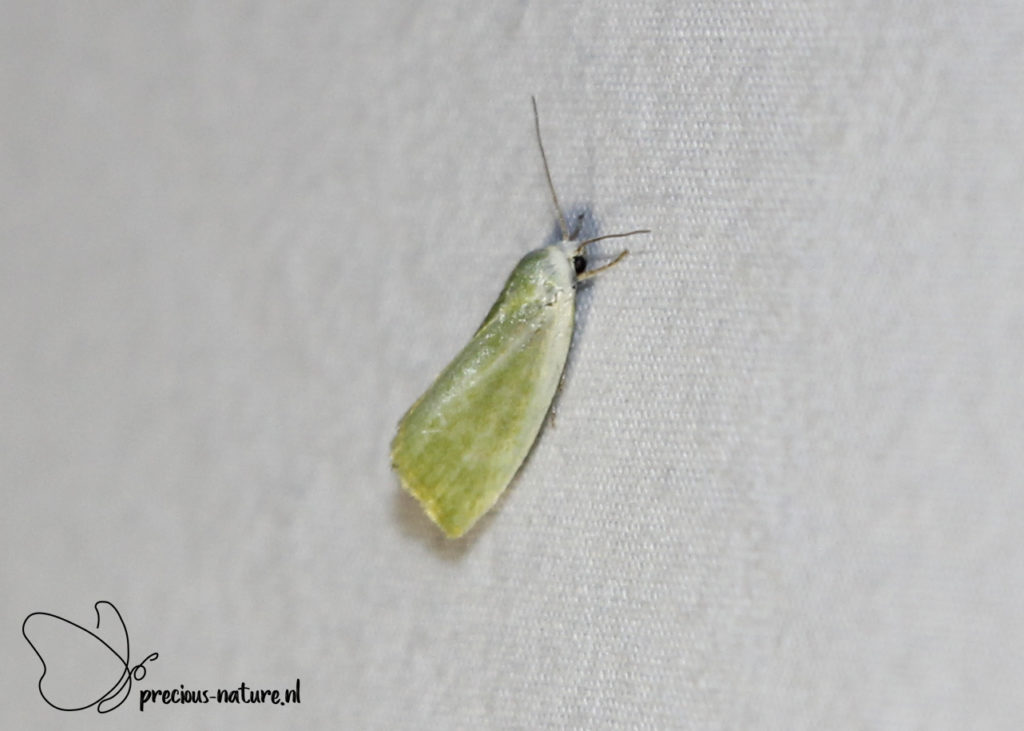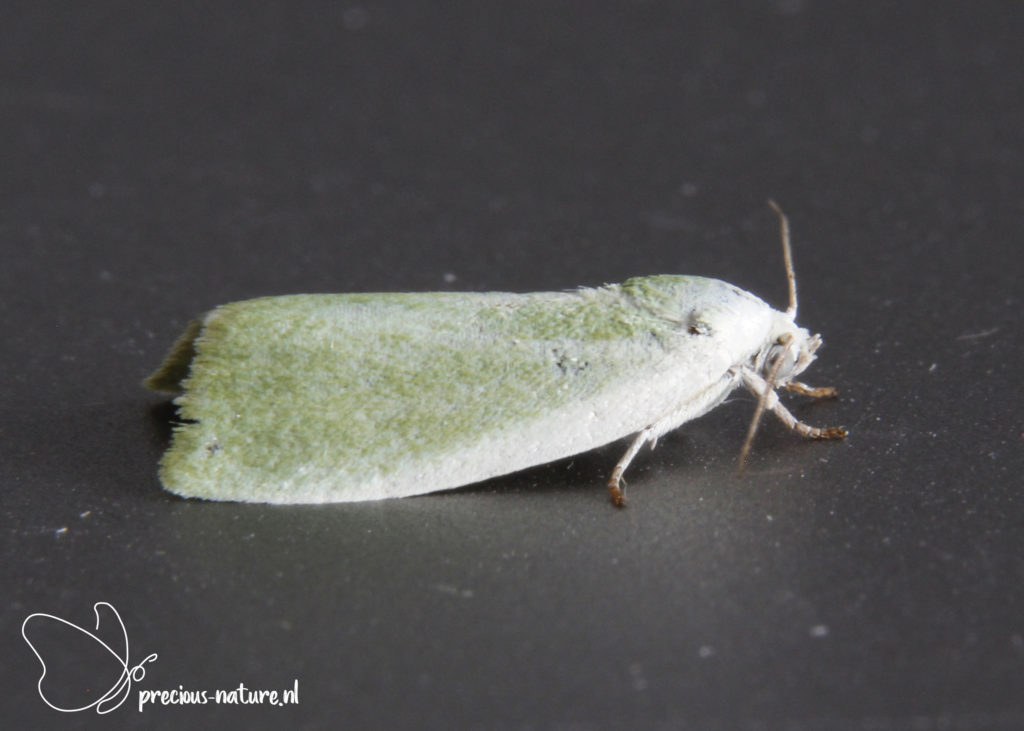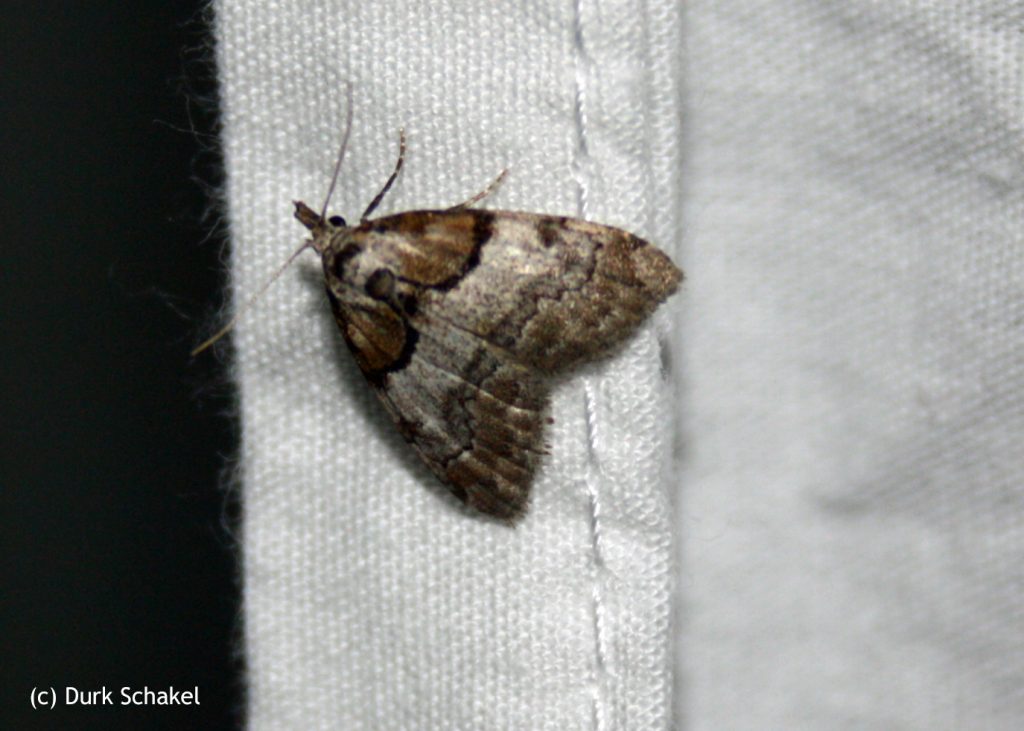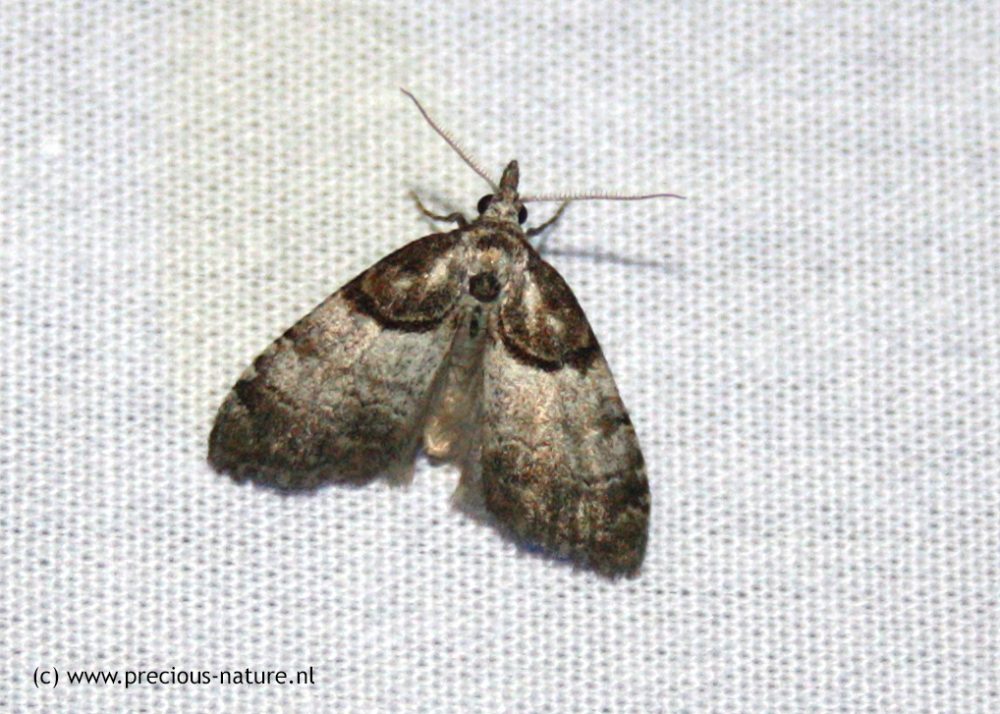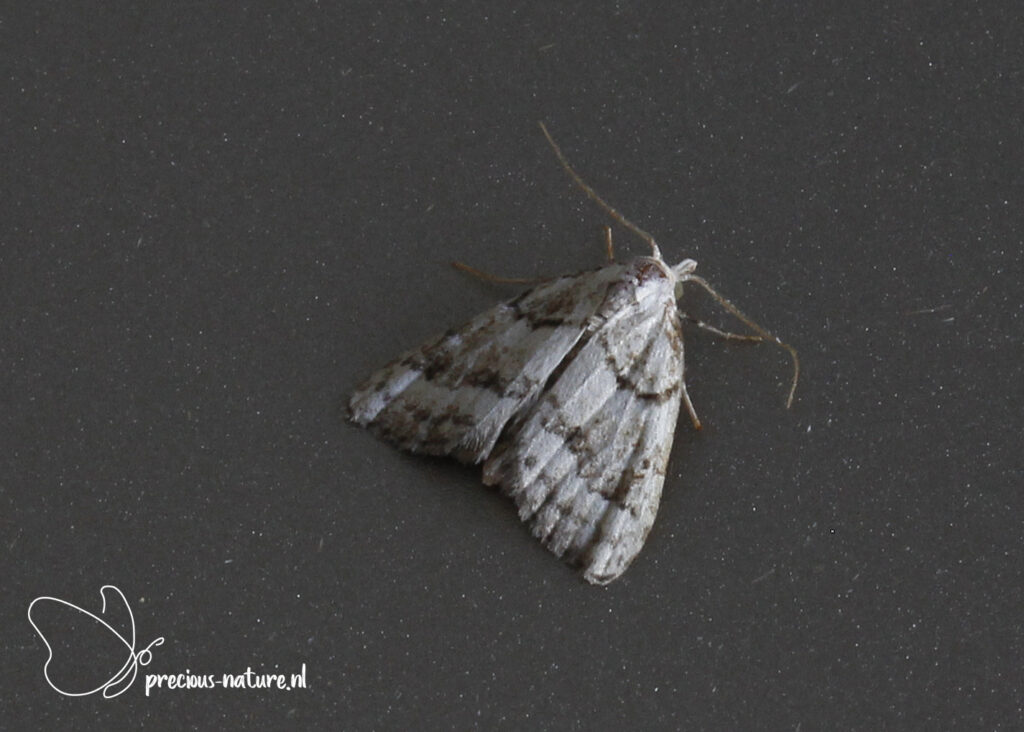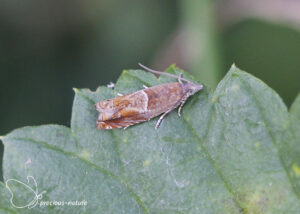The Tuft Moths (Nolidae) are small triangular butterflies with rounded forewings. A special feature is the raised scales, usually three, in the midfield of the forewing, from where they owe their name. Members of the subfamily Chloephorinae are often coloured vivid green, and the Nolinae are predominantly dull grey or white.
Subfamily: Chloephorinae
Genus: Pseudoips
Green Silver-lines – 2020 (NL)
(NCBI-index: 2.758353)
One of the more beautiful moths in colour is the Green Silver-lines (Pseudoips prasinana). The male has an intensely greener forewing than the female and a bright reddish-pink or pinkish-brown wing seam and evenly colored, sometimes checkered, fringes. The head and body are green, the antennae are orange, and the legs are pink. The three silver-colored oblique transverse lines, which run parallel on the bright green wing, complete the picture that this is a feast for my eyes. The hindwing is yellow, and the brisket is large and hairy. The female has a yellow or greenish-white wing seam and a white hindwing. There is usually a dark shadow next to the transverse lines. The wingspan is 32-38 mm, and the flight period is from April to September in one or sometimes two generations. Host plant: Birch, Beech, Elm, Oak, Aspen, Poplar. Dutch name: Zilveren groenuil. Frisian name: Sulveren grienûltsje.
Flying period:

Subfamily: Earidinae
Genus: Earias
Cream-bordered Green Pea – 2017 (NL)
(NCBI-index: 753175)
In a resting position, the Cream-bordered Green Pea (Earias chlorana) often keeps its wings roof-shaped above its abdomen. The forewing has a striking bright light green colour and a white costa. The hindwing is white. The flight period is from April to October in three generations, and the wingspan is 16-20 mm. Host plant: Willow. Dutch name: Kleine groenuil. Frisian name: Grien wylgeûltsje.
Flying period:

Subfamily: Nolinae
Genus: Nola
Short-cloaked Moth – 2017 (NL)
(NCBI-index: 987999)
The Short-cloaked Moth (Nola cucullatella) is nocturnal and is attracted to light easily. At the base of the forewing, there is a brown zone with a black border. When resting, it seems as if he is wearing a cape. The central zone is white, and the rear end is brownish. It flies in one or sometimes two generations from June to September, and the wingspan is 15-20 mm. Host plant: Hawthorn, Blackthorn, Apple. Dutch name: Klein visstaartje. Frisian name: –
Flying period:

Subfamily: Nolinae
Genus: Nola
Scarce Black Arches – 2022 (NL)
(NCBI-index: 753203)
The most characteristic feature of the Scarce Black Arches (Nola aerugula) to distinguish this moth from other tuft moths is the thin black or brown transverse line slightly off the centre of the forewing. On the inside of that transverse line is a zone of small brown and black dots. Also striking are the three dark-scale pustules on the forewing, which are almost always present and in every colour form. The hind wing is even light grey. The flight period is in one generation from mid-June to mid-August, and the wingspan is 15-20 mm. Host plant: Bird’s-foot Trefoil, Red Clover, White Clover. Dutch name: Licht visstaartje. Frisian name: –
Flying period:


